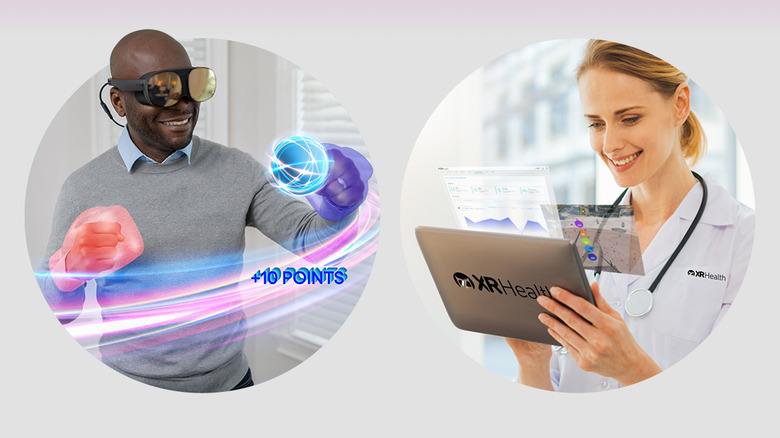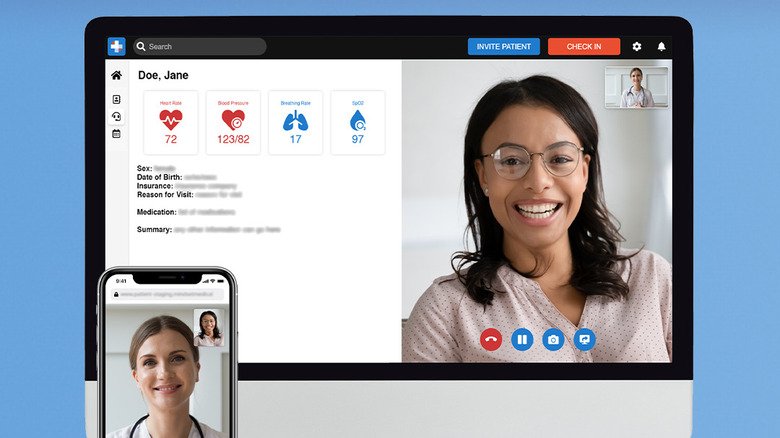Healthcare Tech Expert Joshua Di Frances On What A Virtual Checkup Could Look Like In 10 Years - Exclusive
The COVID-19 pandemic has forced us all to acclimate to a completely different kind of doctor's appointment. Though some issues still require us to go into a doctor's office, many appointments are now handled virtually via telemedicine platforms. These technologies existed before the pandemic, but they weren't widely used until COVID forced the world to shut down and stay home.
Two years later, most of us are accustomed to these screen-to-screen chats with our medical professionals. But, there are still some obvious drawbacks. Doctors can't take your vital signs like your blood pressure when you're at home, and most of us don't have the equipment to take readings ourselves. And though you can show your doctor an injury or a rash using your computer's webcam or your phone's camera, the doctor can't always see it well enough to make a definitive diagnosis.
According to healthcare tech expert Joshua Di Frances, the Head of Incubation at LG NOVA, these drawbacks probably won't be an issue in the future. In fact, not too long from now, we'll probably be able to do thorough doctor's appointments right on our computers or phones, with the help of some additional devices. In an exclusive interview with Health Digest, Di Frances revealed what a virtual checkup could look like in the future and what kinds of technologies will make it possible.
Virtual reality and telemedicine are the way of the future
When most of us think of Virtual Reality (VR), we think of video games. However, VR has myriad applications, many of which are applicable to telemedicine. Di Frances revealed that one brand his company LG NOVA works with has developed immersive, "virtual treatment rooms." XR Health currently provides physical therapy, occupational therapy, and mental health wellness appointments using a virtual reality headset that they send to their patients. During appointments, patients wear the headset, which shows them a "virtual treatment room" as if they're actually there. Their PT or OT is in the room with them, and they can work together on prescribed exercises.
Di Frances said that this technology can be adapted for countless applications, including appointments with your primary care physician. In the future, your yearly checkup could be done in one of these "virtual treatment rooms" as well, where you'd be able to sit in an exam room without ever leaving your home.
Collecting patient information via connected devices
Di Frances explained that multiple companies are working on solving one of the biggest limitations of telehealth – the inability to collect accurate patient data, like vital signs.
"There's a company that we're working with called Mindset Medical, that really can look at, essentially, your face and take your vitals based on that," Di Frances revealed. "There's some really interesting emerging technology in the space that's going to be a game changer. We're not going to go in the future and do the blood pressure cuff and things like that. It's going to be done in a totally different way."
He said that data like vital signs could be collected through devices like fitness trackers and smartwatches, which already collect some of that data, and sent directly to your Electronic Health Record. Di Frances added that companies like Mindset Medical will likely develop other connected devices that doctors could send to patients to collect vital signs and other data. That means in the not so distant future, a regular, yearly physical could happen in your home, with a VR headset, your smartwatch, and your computer.
To learn more about the LG NOVA program and the Mission for the Future Challenge, please visit www.lgnova.com.



